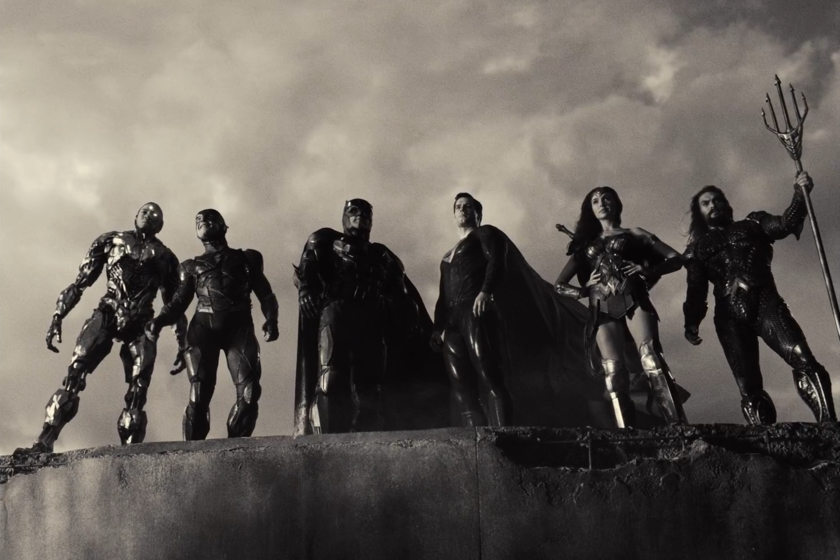If we put aside scientific approaches to color theory and its impact on the human mind, and appeal directly to the visceral and emotional, there is no doubt that, within the cinematographic medium, the black and white image has a unique aura capable of completely resizing the sensations conveyed by a feature film.
Although its original premiere ended up being in full color, during the long promotional campaign prior to the landing of ‘Zack Snyder’s Justice League’ on HBO Max – HBO in our lands -, the director stated on numerous occasions that his final version of the Warner and DC tape was viewed with a fully desaturated 1.33: 1 aspect ratio.

After having enjoyed a couple of times the Snyder Cut in full color, and having immersed myself in its monochromatic montage released under the title of ‘Justice is gray’, I can firmly affirm that this new cut of the superhero adventure offers a radically different experience than the one we could see from the start; making it more epic, more intense, more violent and almost timeless.
Less colors. More intensity.
A simple look at the prologue of ‘Zack Snyder’s Justice League: Justice is Gray’, which recapitulates the events of the climax of ‘Batman v Superman: Dawn of Justice’, already allows us savor the effects of black and white —Which, if the videoscopes in my editing software don’t lie, tend to sepia in the midtones and highlights—— about film footage.
The skyline of Gotham city plunged into night, the depths of Atlantis, the Themyscira chamber or the snowy landscape that Bruce Wayne resorts to in his search for Aquaman —to give some condensed examples in the first ten minutes of the film—, and the way in which the characters are now integrated into them, They have gained in spectacularity, taking the ultra-stylized look of Snyder’s cinema one step further..

With a work of color grading to frame captained by Stefan Sonnenfeld, ‘Justice is Gray’ squeezes every last drop of texture and grain from Kodak Vision3 negative, and plays with the expressionist codes by enhancing the techniques of backlighting and backlighting, and increasing the sensation of volume in the faces thanks to a contrast treatment that is not afraid to play with low luminance levels in blacks.
It is surprising that a change in the packaging in terms of color can affect the tone of the production so much that now it seems even more absurdly epic and solemn; a sensation that is also projected on the “stylistic subgenres” that populate the album. Now the sequences set in Gotham have even more essence noire, and everything that surrounds Cyborg, the Mother Boxes and the alien invasions with Parademons and mammoth creatures in between seem drawn from a science fiction story with a fifties soul.

On the other hand, the set pieces of ‘Zack Snyder’s Justice League’ also benefit from the lack of color. In addition to camouflaging CGI much more efficiently, black and white and increased contrast make actions much more legible and increase the visibility of blood, particles and debris; adding a nice extra punch to the combat scenes.
Return to passages as amazing as the great battle of the alliance against Darkseid, to more intimate moments like the reunion between Clark, Lois and Martha at the Kent farm, or to a football game in which the figure of Victor Stone filters through the dense layer of snow that falls in the foreground, all of them enriched by the absence of color, has been a real delight.

After all, cinema is still a matter of sensations, and it is not the first time that a blockbuster has managed to take them to a new level by reducing everything to black and white. ‘Logan’ and ‘Mad Max: Fury Road’ already demonstrated the power that monochromatic image gives to a feature film with their versions ‘Noir’ and ‘Black & Chrome’; now, ‘Zack Snyder’s Justice League’ has reaffirmed it with a ‘Justice is gray’ that makes Wisconsin’s superhero magnum opus even better..
N. del A .: I anticipate the comments to say that yes, I have written another article on the Snyder Cut, but believe me when I say that it was very worth it. You are loved, really.
